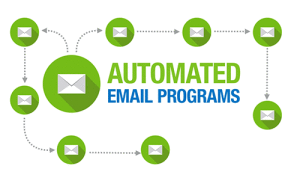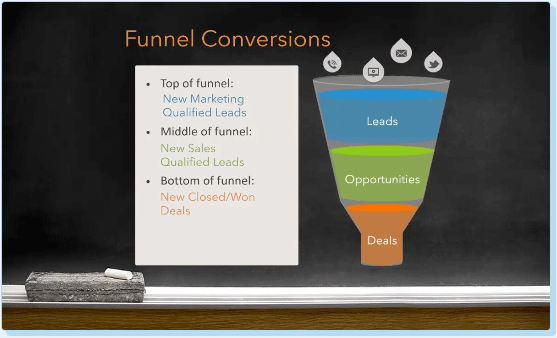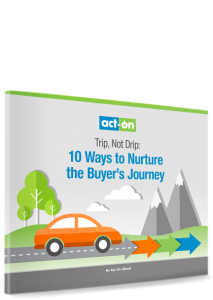B2B buyers are becoming more like B2C consumers in the way they shop and buy products and solutions. Instead of waiting for an invitation, they’re starting the buying journey on their own, gathering information and doing research long before they’re ready to buy. In fact, according to Forrester Research, prospects wait until they are 65% to 90% of the way through their journey before approaching a vendor.
starting the buying journey on their own, gathering information and doing research long before they’re ready to buy. In fact, according to Forrester Research, prospects wait until they are 65% to 90% of the way through their journey before approaching a vendor.
This shift in buying behavior is transforming B2B marketing. Simple outbound strategies just aren’t enough anymore. These days, many B2B marketers are getting superior results by using short- and long-term nurturing programs:
- Forrester Research found that companies excelling at lead nurturing generate 50% more sales-ready leads, at a 33% lower cost.
- Nurtured leads make purchases that are 47% larger than those of non-nurtured leads, according to the Annuitas Group.
Launching a nurturing campaign can be overwhelming, however. You have to map out the steps in your buyer’s journey, create and assign content to be delivered at the right time, develop a lead scoring strategy to identify where leads are in the funnel, and create an action plan for leads that are ready to buy. It sounds like a lot of work, but if you just take it step-by-step, you’ll find that the automated nature of nurturing campaigns ends up saving you a huge amount of time and resources in a relatively short amount of time.
Here’s a quick look at the basics of lead nurturing from Olivia W., Strategic Account Manager with Act-On Software.
Taking the Leads
If you’re ready to dive in, let’s take a look at the basic steps for creating a campaign that nurtures leads throughout every stage of their journey – from the first moment they become aware that they have a problem to solve or a need to fulfil, to the final purchase and beyond.
Mapping the funnel your potential buyers travel through is a great way to start the process. Here’s an example showing the top of the funnel, the middle of the funnel, and the bottom of the funnel.
To go with your funnel, you can create a lead scoring matrix defining where a lead lands in it. Here’s an example that demonstrates scores that align to each stage of the funnel, with a target qualification number of 40. Your scoring matrix may vary, but however you define it, this will be the foundational tool for identifying the qualification of a lead based on their engagement.
Marketing Funnel Stage Lead Score Unengaged 0 Top of Funnel (Engaged) 1 – 10 Middle of Funnel 11 – 29 Bottom of Funnel 30 – 39 Marketing Qualified/Sales Ready 40 – 60 Hot Leads for Sales 60+
You’ll also want to set up your lead scoring values used to target the actions your prospects would take as they travel through the funnel. Here’s an example of scoring based on behaviors.
Action Score Reason Opened an email 1 If a message has been opened, it doesn’t really indicate buying interest. We’ll score it with one point, however, because it’s better than if they never opened it. Clicked on an email 5 Clicking on a message, even to view it in a browser shows, that the prospect may be interested. However, it’s not a demonstration of buying behavior. Viewed a form 5 It’s great that a prospect viewed a form, in combination with other behaviors. But if the prospect doesn’t submit their information, they’re not quite ready yet. Submitted a form 10 Submitting any form means a prospect has become ready to trade information for content. This is a strong indicator of interest.
Your own matrix and scoring list will be customized based on the actions you want the ideal customer to take. Watching a webinar, viewing a pricing page, or downloading product data sheets are all potential lead-scoring activities.
Nurturing Programs in Action
Now let’s look at some of the ways your lead nurturing campaign could play out throughout the funnel based on our sample matrix.
Step 1: Capture Top-of-Funnel Prospects with High-Level Content
Audience: (Score 0 – 10)
- Send a series of messages that present helpful solutions related to the pain points your prospects experience – and that your company addresses. Prospects that open and click on the message will be sent the next email in the nurture stream. Those that don’t open or click will be sent a new message with different content.
- Once the prospect takes key actions or achieves the appropriate lead score, they will be routed to step 2.
Step 2: Nurture Unengaged Top-of-Funnel Prospects
Audience: Leads returned to marketing and unengaged leads
- Long-term nurture programs can also be set up for leads that are returned to marketing from sales for additional nurturing or those who continue to be unengaged with the program.
- Send a series of messages presented at a slower tempo but similar in functionality to step one.
- No engagement after six months in this program should permanently disqualify a lead from marketing.
- Upon taking key actions or achieving the appropriate lead score, leads can be routed to step three.
Step 3: Nurture Middle-of-Funnel Leads with Content about Your Offerings
Audience: (Score 11-29)
- Deliver a series of messages that present the products or services offered by your company that are looking for a specific call to action, such as a “view a demo” page or “contact us.” Direct engagement with one of these actions removes the contacts from this program and converts them to qualified lead.
- Indirect engagement (like viewing a “contact us” form but not submitting it) routes a lead to step four.
Step 4: Convert Bottom-of-Funnel Leads with Sales Engagement
Audience: (Score 30 – 39)
- Send a series of personalized messages from a real person, such as a sales representative or a business development manager requesting a meeting and providing more information.
- These programs can be set to trigger alerts to the sales team when key actions or behaviors are taken.
Step 5: Keep Your Customers Engaged
Audience: Existing Customers
- A series of messages sent monthly can develop relationships and build recurring business and referrals.
- Developing a referral program and incentives for repeat business is a great way to build loyalty and gain new customers.
 Early Exit Conditions
Early Exit Conditions
This step is up to you, but you may want to build your nurturing programs with a “sales engaged” early exit condition. This could be based on a form that your sales team would submit for leads they are engaged with. That would trigger the removal of the lead from the automated program flows.
Ready to start nurturing prospects and creating more sales-ready leads? Download this comprehensive eBook, 10 Ways to Nurture the Buyer’s Journey, to learn how to build a successful lead nurturing campaign in today’s complex B2B marketing world.

